20 Tasty Tricks To Achieve Perfectly Cooked Baked Potatoes
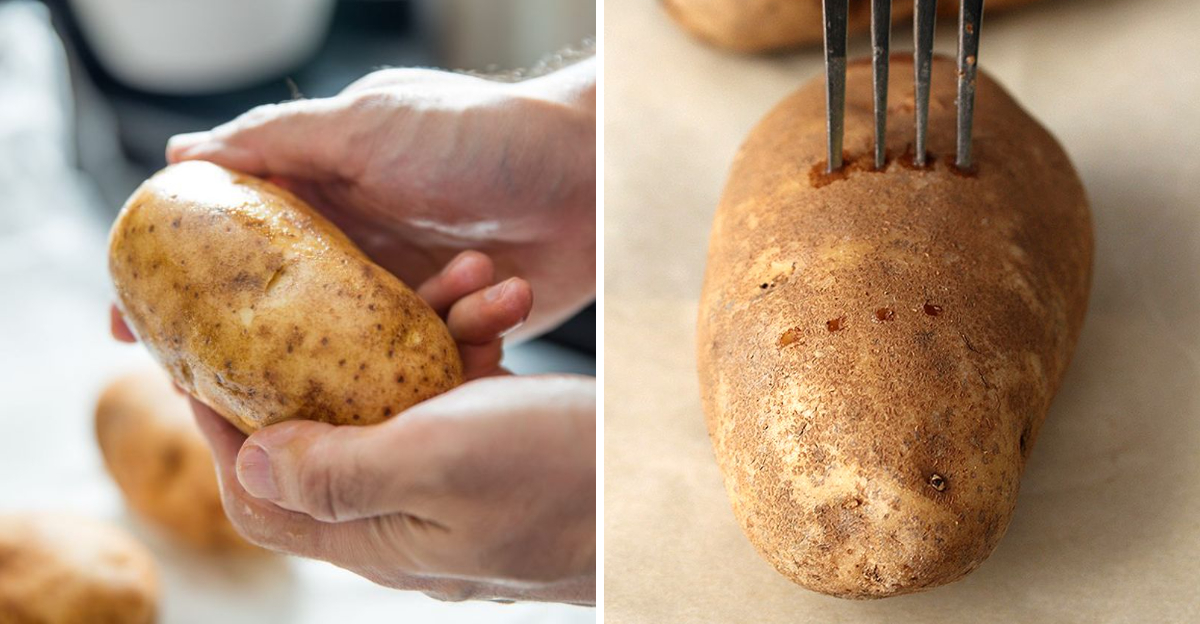
Achieving the perfect baked potato is a culinary art. With the right technique, you can transform a simple tuber into a fluffy, flavorful delight. Here are 20 expert tips to guide you towards potato perfection.
1. Choose the Right Potato
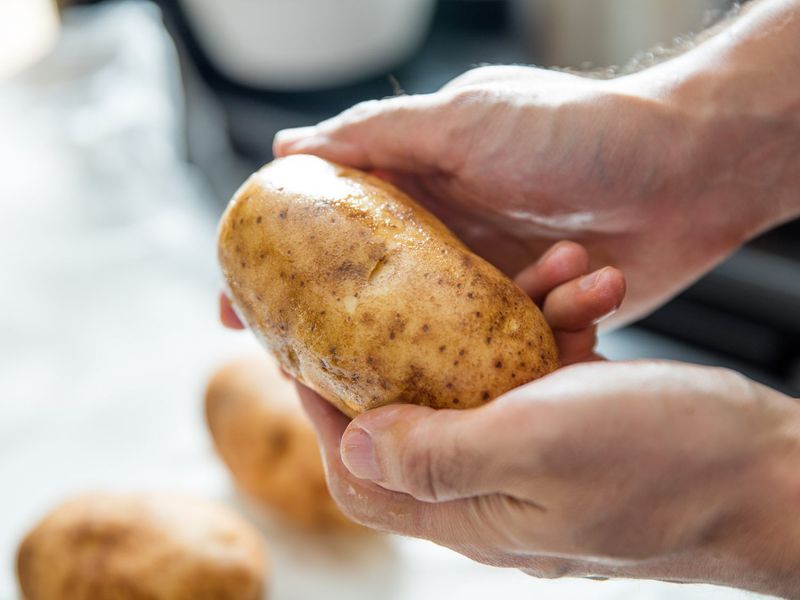
To achieve the classic baked potato, start with the right variety. Russet potatoes are your best bet due to their high starch content and low moisture. This balance gives them the characteristic fluffy interior and crispy skin when baked. In contrast, waxy potatoes, like red or new potatoes, have too much moisture and can result in a denser, less airy texture. The Russet’s thick skin also crisps up beautifully, providing a satisfying crunch. Always look for firm potatoes without any greenish tinge or sprouts, as these can affect the flavor and texture negatively.
2. Scrub ‘Em Clean
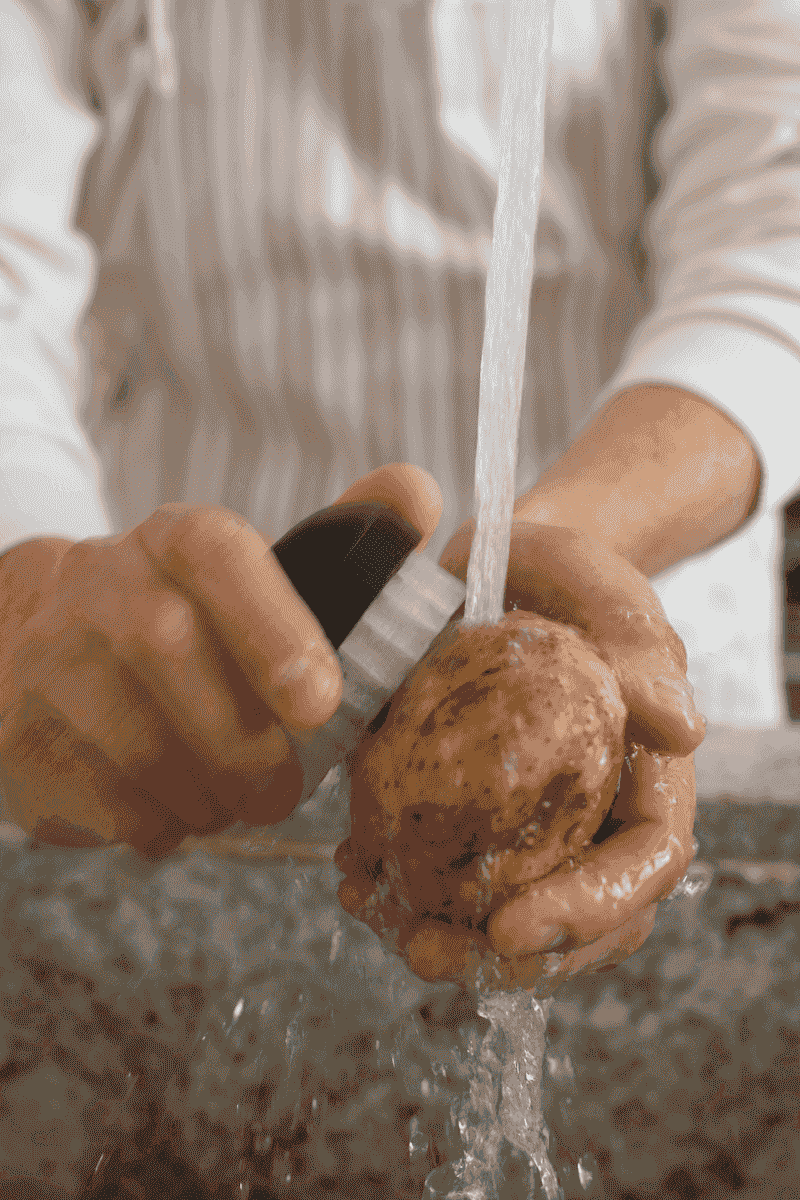
Before you bake, give your potatoes a thorough scrubbing. Potatoes grow underground, so their skins can carry dirt and grit. A good scrub under cold water with a stiff brush helps remove any residue, ensuring a clean surface. This step also prevents any unwanted flavors from permeating the potato during baking. It’s not just about cleanliness; it’s about ensuring that every bite is as delicious as possible. If you’re planning to eat the skin, which is highly recommended for its nutrients and flavor, cleanliness is paramount.
3. Poke Holes All Over
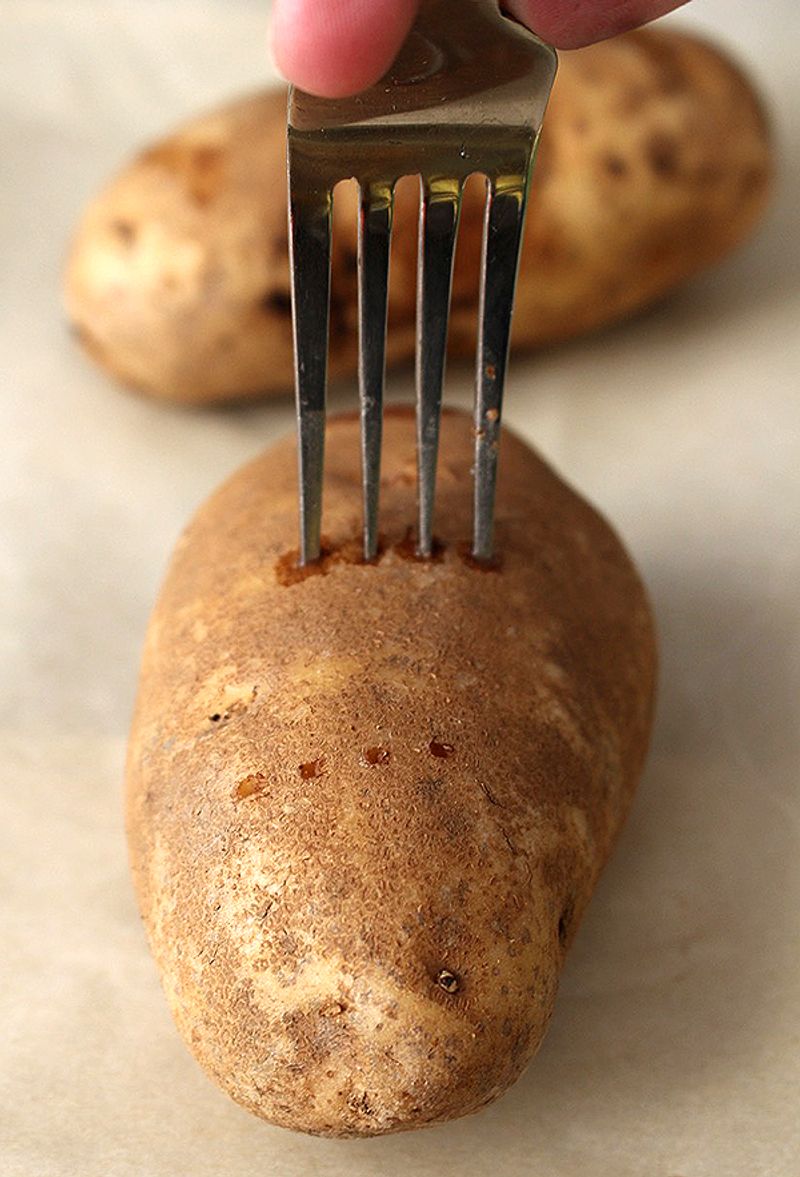
Avoid the dreaded potato explosion by poking holes all over the potato. As the potato bakes, it releases steam, and without an escape route, it can burst. Use a fork to pierce the skin at regular intervals, ensuring even steam release. This simple step prevents messy oven incidents and ensures that the potato cooks uniformly inside. The steam escaping from these tiny vents also helps in crisping the skin, a key factor in a perfect baked potato. Take your time and make sure each potato is sufficiently pierced.
4. Dry Thoroughly After Washing
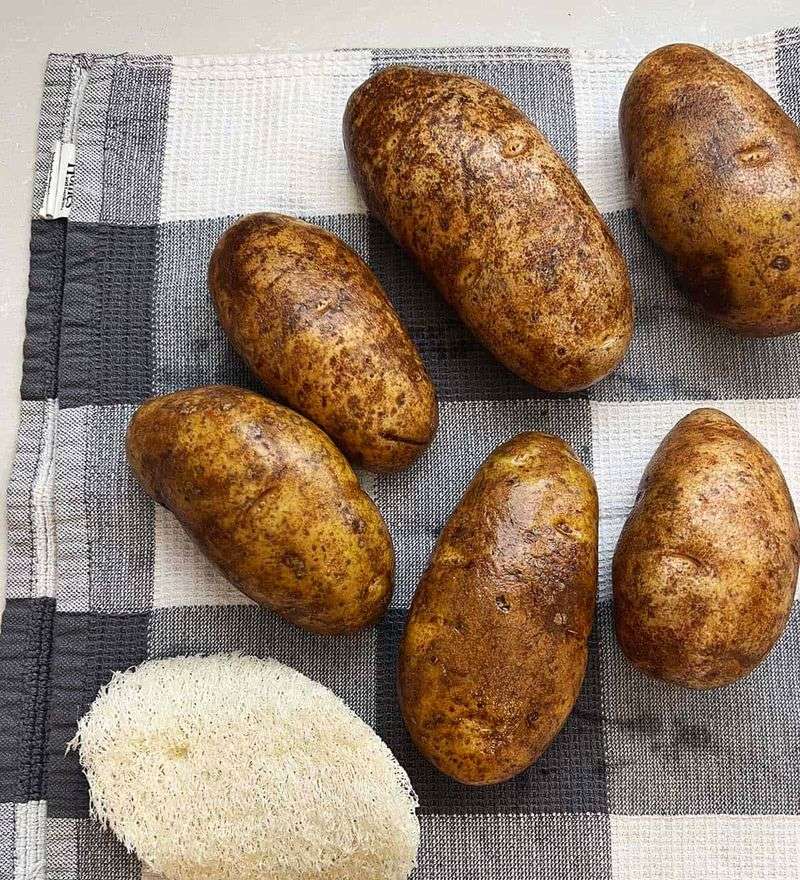
Dampness is the enemy of crispy skin. After scrubbing your potatoes, it’s crucial to dry them thoroughly. Use a clean kitchen towel or paper towels to pat each potato dry. Any remaining moisture will turn to steam in the oven, which can result in a soggy exterior. By ensuring the skin is dry, you promote that desirable crispy texture. This step is especially important if you’ve scrubbed the potatoes right before baking. Take a moment to dry them well, and you’ll be rewarded with a superior result.
5. Coat with Oil or Butter
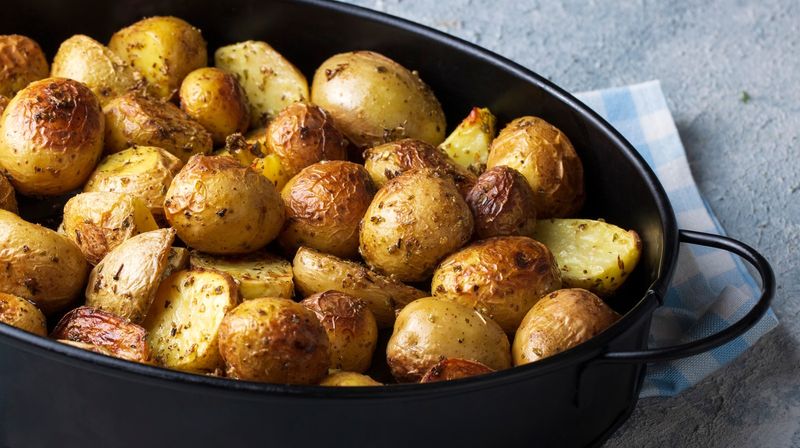
Enhance your baked potato’s skin by rubbing it with olive oil or melted butter. This adds flavor and helps the skin crisp up beautifully in the oven. Use just enough to coat the surface without making it greasy. The fat helps conduct heat, ensuring even cooking and a delightful texture. For a unique twist, try using flavored oils or compound butters infused with herbs or garlic. This simple addition transforms the potato from basic to gourmet, adding layers of flavor that complement any topping.
6. Season the Skin
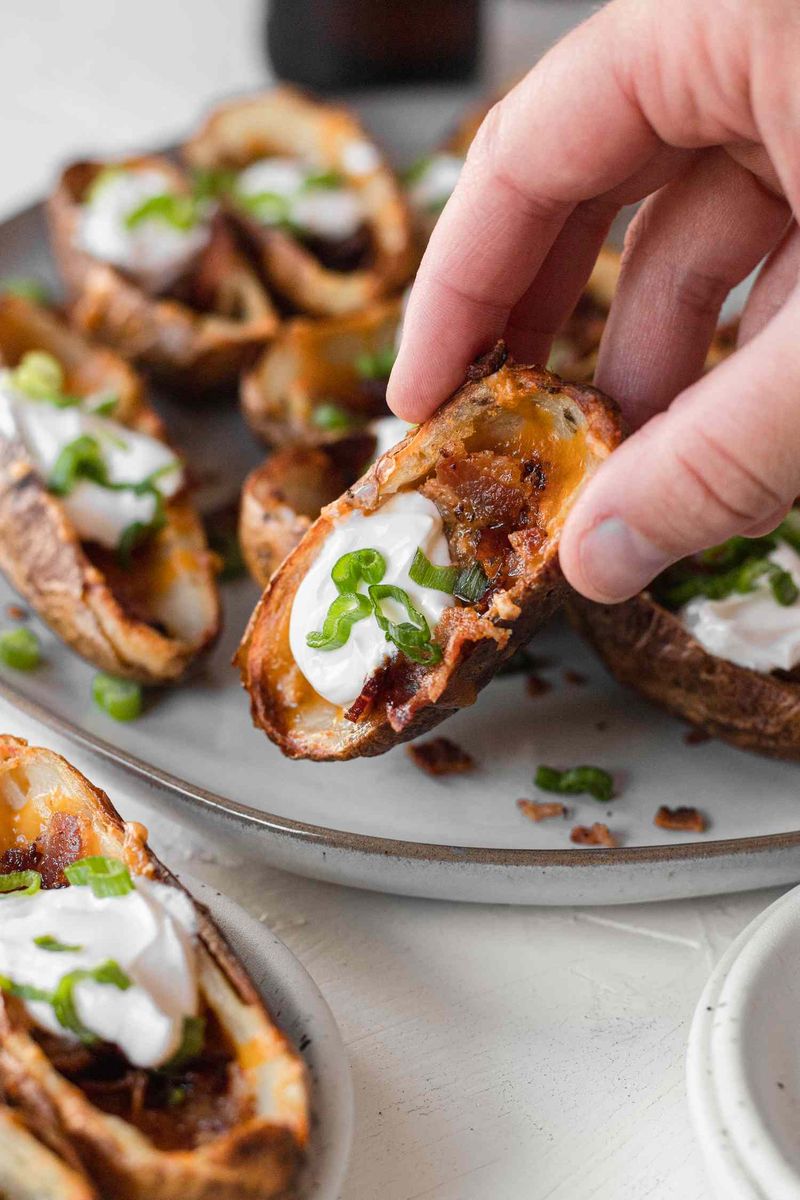
Don’t overlook the skin when it comes to seasoning. After coating the potato with oil or butter, sprinkle coarse salt or your favorite seasoning blend over the skin. This not only enhances flavor but also aids in forming a crispy crust. Garlic powder, rosemary, or even a spicy seasoning mix can elevate the taste profile, making every bite enjoyable. The seasoned skin becomes a tasty treat on its own, complementing the fluffy interior. Investing time in this step ensures each potato is packed with flavor.
7. Bake Directly on the Rack

For evenly crisped skin, bake potatoes directly on the oven rack. This method allows hot air to circulate all sides, ensuring that each potato emerges perfectly cooked without soggy bottoms. If you’re concerned about drips, place a baking sheet on the rack below. This setup achieves a uniform crispness that a baking tray cannot offer. It’s a small adjustment that makes a big difference in texture. By allowing the skin to breathe, you encourage maximum crunch, elevating your potato to new heights.
8. Don’t Wrap in Foil
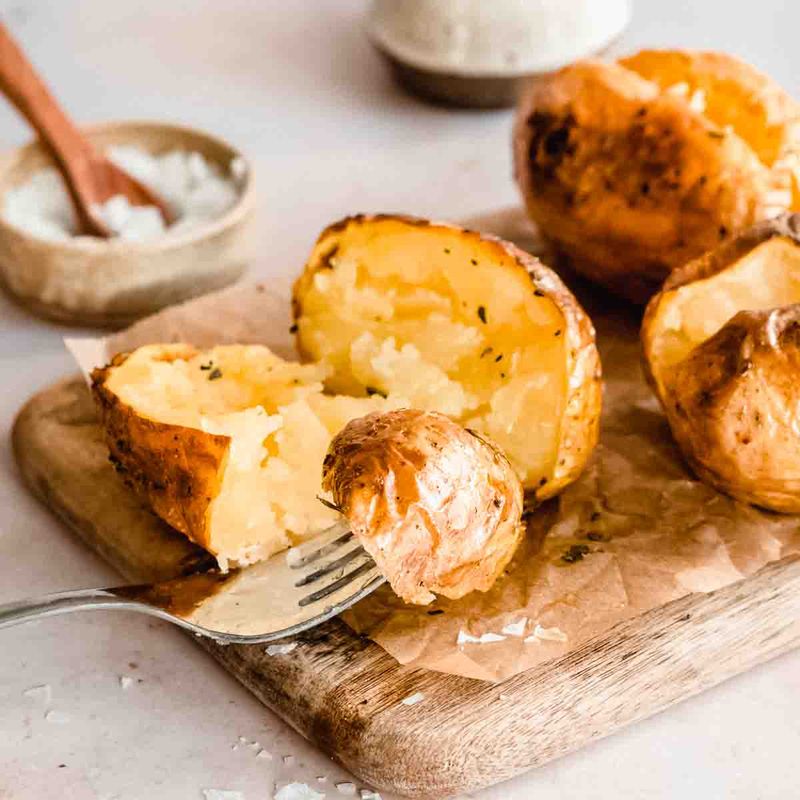
While wrapping potatoes in foil might seem convenient, it traps moisture, leading to a steamed, rather than baked, texture. Foil prevents the skin from crisping up, robbing you of that delightful crunch. Instead, bake them bare for the best results. Naked potatoes allow the skin to dry out properly, forming that coveted crispy layer. If you prefer softer skin, wrap the potato in foil after baking to retain heat. This technique keeps interiors fluffy while offering a choice of textures.
9. Bake at the Right Temp
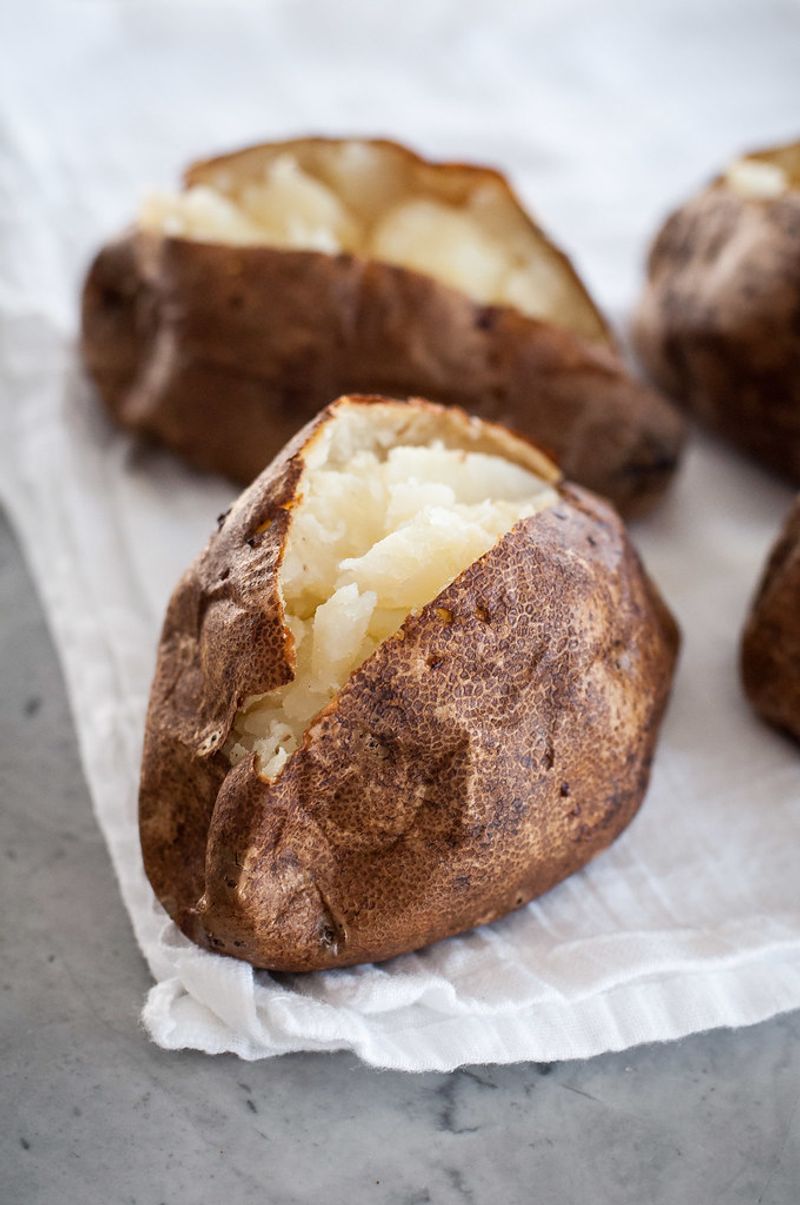
Temperature is key to achieving the ideal baked potato. Set your oven between 400°F and 425°F. This range allows the inside to become soft and fluffy while the skin crisps perfectly. Too low, and you risk a gummy interior; too high, and the exterior may burn before the center is cooked. This temperature sweet spot ensures that the potato’s starches break down properly, creating a light, airy texture. Consistency is crucial, so avoid frequently opening the oven door to maintain a steady heat.
10. Use a Meat Thermometer
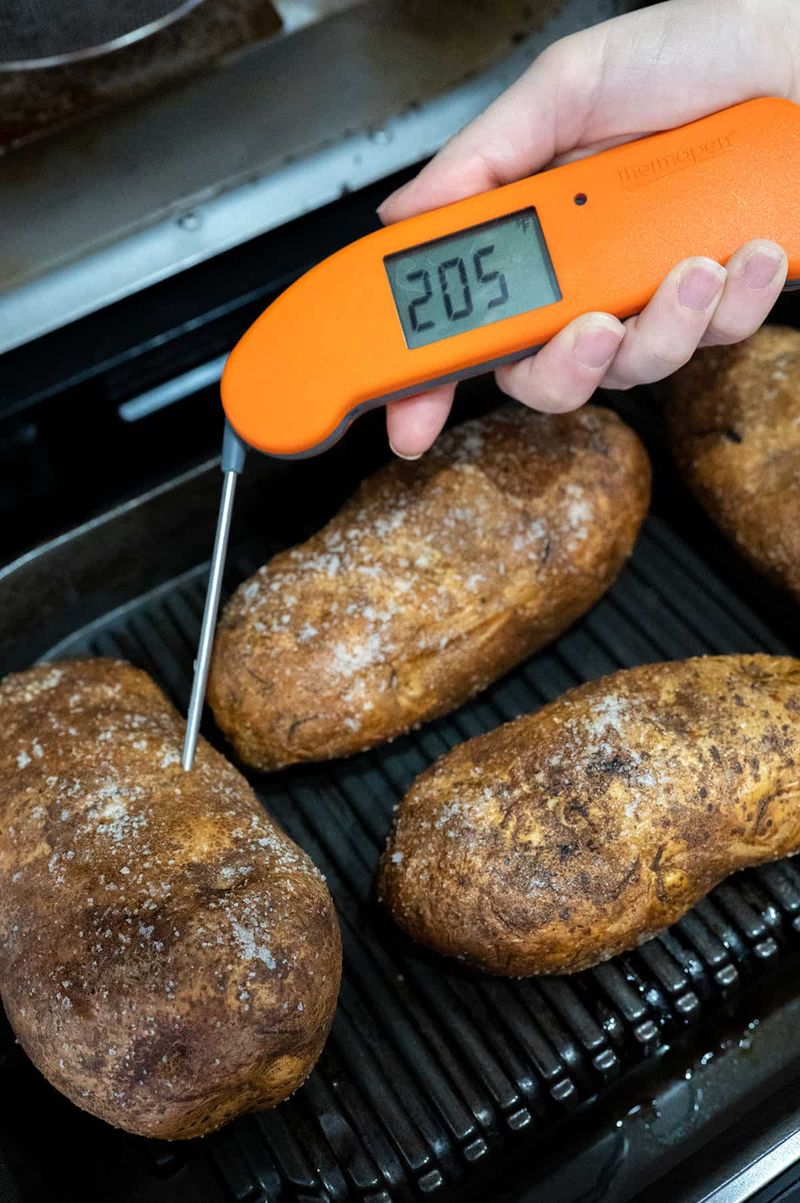
Ensure your potato is cooked to perfection by using a meat thermometer. Probe the potato’s center, aiming for an internal temperature of around 205°F. This specific temperature indicates that the potato’s starches have gelatinized, resulting in a creamy, fluffy interior. While this might seem excessive for a simple potato, it guarantees consistency and elevates your cooking precision. Cooking by temperature removes the guesswork and ensures delicious results every time. It’s a small tool that makes a big difference in achieving culinary excellence.
11. Give It Time
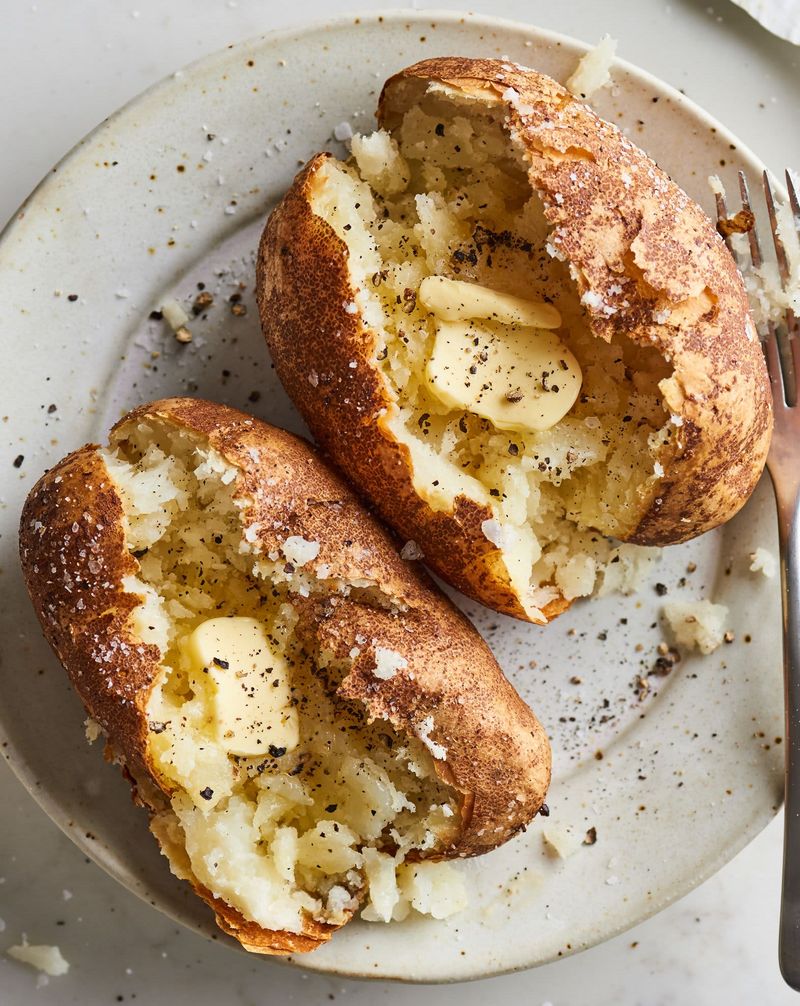
Good things come to those who wait, and baked potatoes are no exception. Allow your potatoes to bake for 45 minutes to an hour, depending on size. Rushing this process leads to undercooked, gluey interiors. Patience is your ally in achieving the perfect texture. Large potatoes require more time to ensure the center cooks evenly while the skin crisps. If you find yourself in a hurry, consider using smaller potatoes or cutting them in half. However, the traditional whole baked potato truly shines when given time to reach perfection.
12. Flip Halfway Through
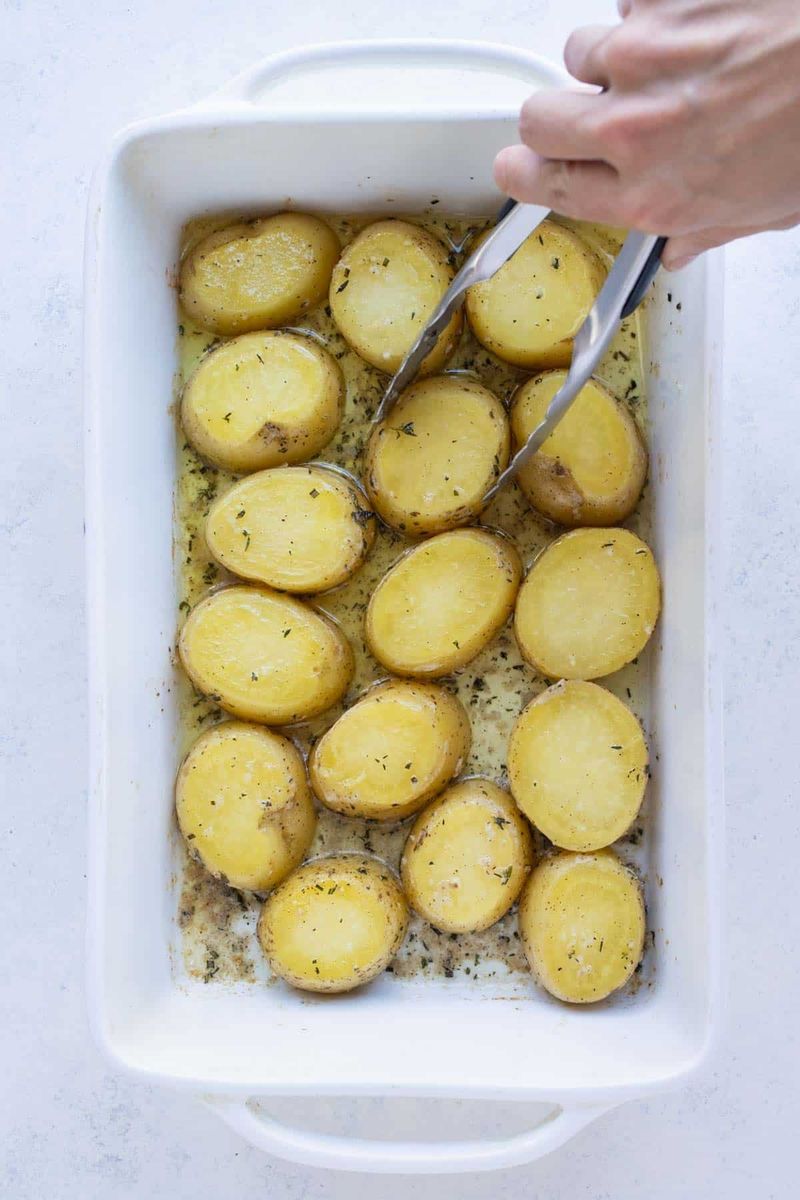
For an evenly cooked potato, flip it halfway through the baking process. This ensures that both sides receive equal exposure to the oven’s heat, promoting uniform cooking and crisping of the skin. As the potato rests on the rack, one side may brown more quickly. Rotating them midway helps achieve consistency in texture and appearance. This simple action prevents overly crispy or undercooked spots. It’s an easy step that plays a significant role in optimizing the potato’s final presentation and taste.
13. Finish Under the Broiler
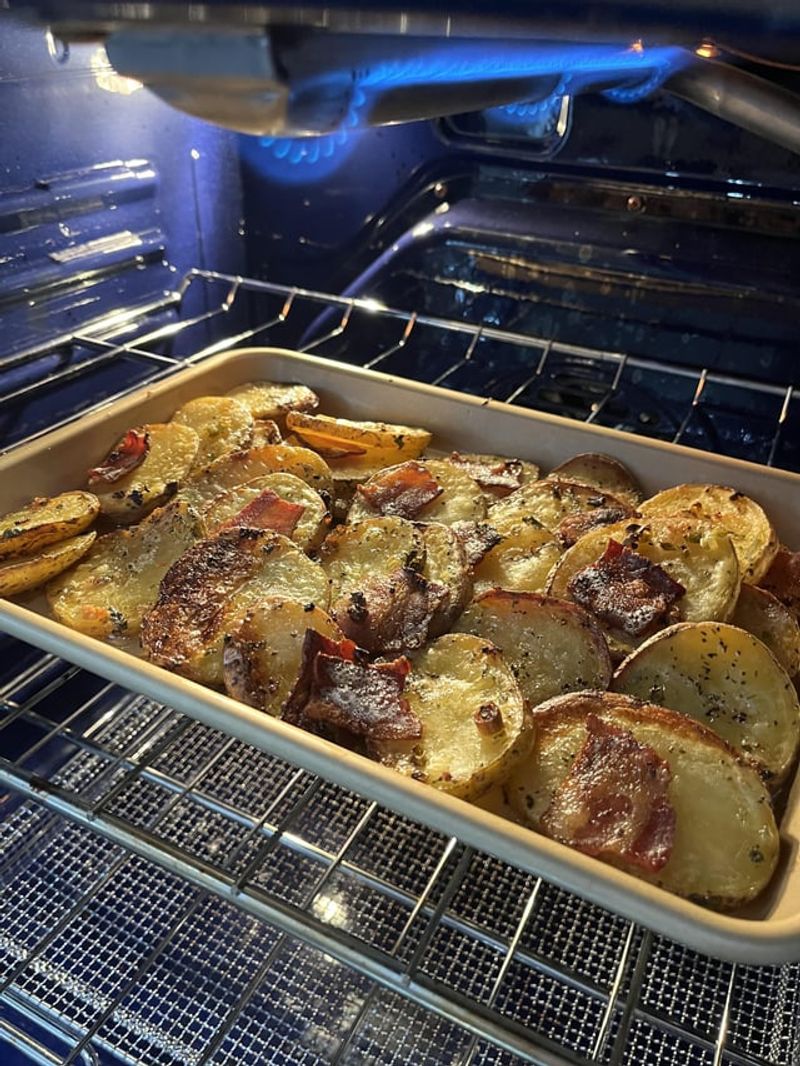
For an extra crispy finish, place your potatoes under the broiler for a couple of minutes after baking. This high-intensity heat quickly browns and crisps the skin, adding an irresistible texture. Keep a close eye to prevent burning, as the broiler’s heat is intense. This last-minute technique elevates the potato’s presentation and flavor, creating a satisfying contrast between the crispy exterior and the fluffy interior. Serve immediately after broiling to enjoy the full effect of this finishing touch.
14. Rest Before Cutting
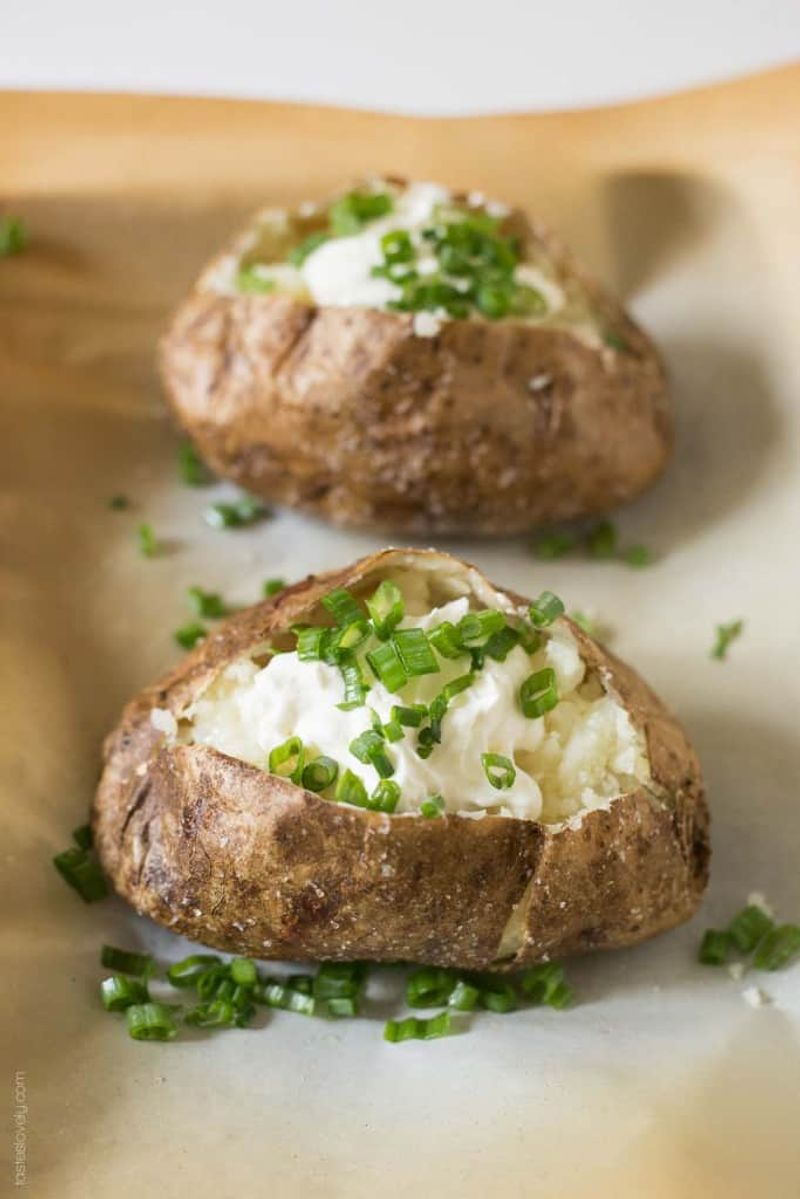
After baking, allow your potatoes to rest for five minutes before cutting. This brief pause lets the interior settle and retain moisture, preventing it from drying out too quickly. During this time, the steam redistributes evenly throughout the potato, enhancing its fluffy texture. Cutting too soon releases all the steam, potentially leading to a drier result. Patience in this final step ensures a moist, tender interior that contrasts beautifully with the crisp skin. It’s the finishing touch for a perfect baked potato experience.
15. Cut an “X” on Top

Create a delightful presentation by cutting an “X” on the top of the potato. Gently squeeze the ends to open it up, revealing a fluffy, steamy interior. This technique not only looks appealing but also allows for easier topping distribution. The open potato invites a variety of toppings, from classic butter and sour cream to adventurous combinations like bacon and chives. Simplicity and elegance meet in this presentation, enhancing both the potato’s flavor and your dining experience.
16. Don’t Overstuff Early
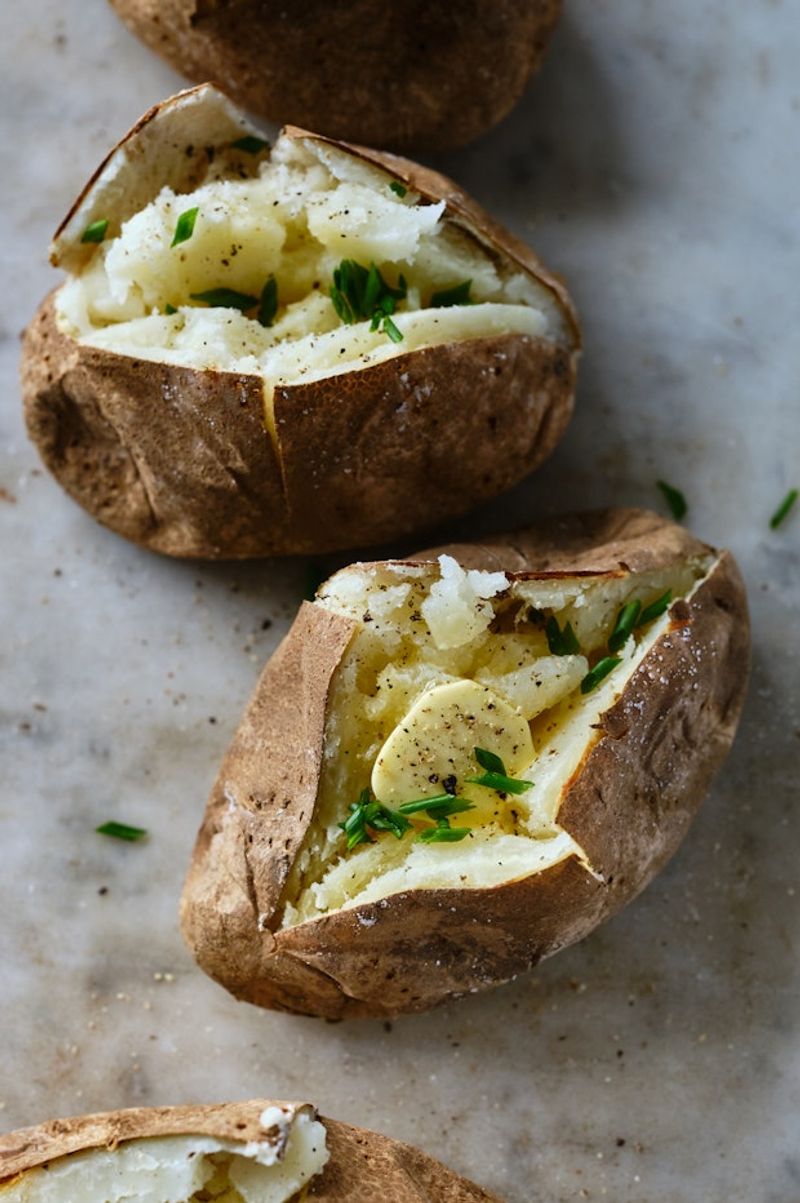
Begin with a simple butter layer on your baked potato, letting it melt into the crevices before adding more toppings. This ensures that each layer complements rather than overwhelms. The melted butter forms a flavorful base, enhancing the potato’s natural taste. After this initial step, add your favorite toppings like cheese, chives, or bacon. By layering thoughtfully, each element retains its distinct flavor, contributing to a harmonious taste experience. This method celebrates the potato’s versatility and enhances its culinary potential.
17. Try a Salt Crust
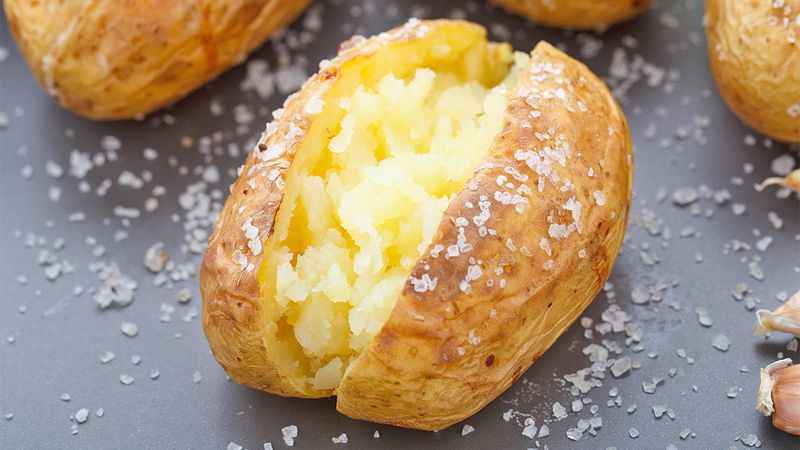
For ultra-crispy skin, bake your potatoes on a bed of coarse salt. This method draws moisture from the potato skin, resulting in an unparalleled crunch. The salt not only enhances the texture but also subtly seasons the potato, adding depth to each bite. After baking, brush off any excess salt before serving. This technique elevates a standard baked potato into a gourmet delight, showcasing the skin’s potential as a flavorful, crunchy contrast to the soft interior. It’s a simple yet effective culinary trick.
18. Use a Wire Rack on a Sheet Tray
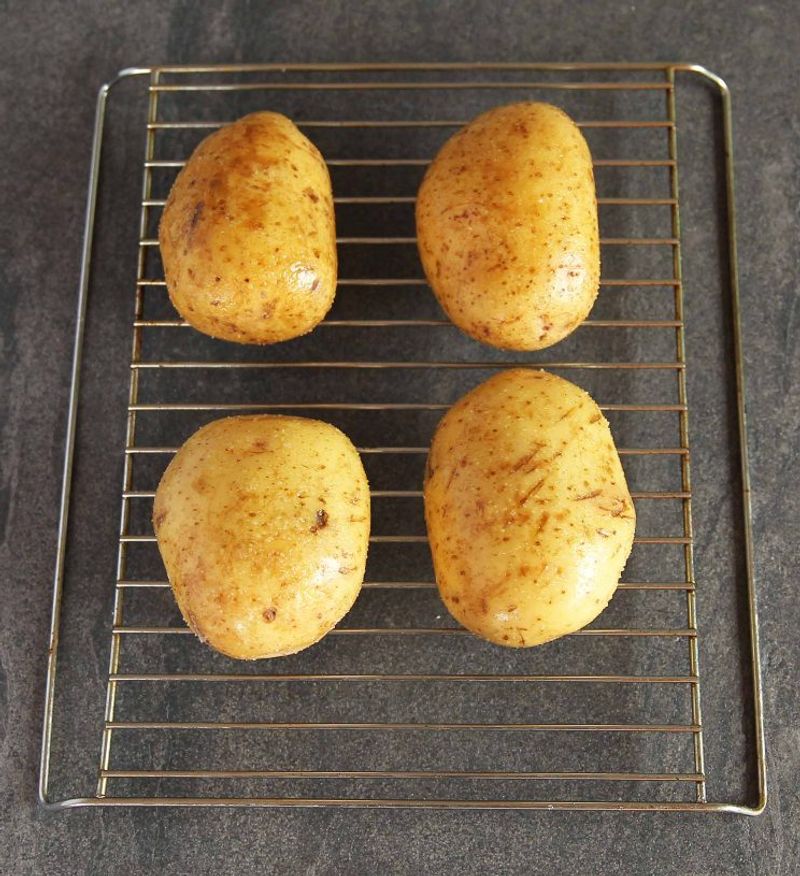
If placing potatoes directly on the oven rack feels precarious, use a wire rack set over a baking sheet. This arrangement allows heat to circulate around the potato, promoting even cooking. The wire rack lifts the potatoes, preventing them from sitting in any moisture that might accumulate, which leads to a crispier skin. This setup combines the benefits of direct rack baking with added security, making it easier to handle multiple potatoes at once. The result is a perfectly baked potato with balanced texture and taste.
19. Reheat Properly
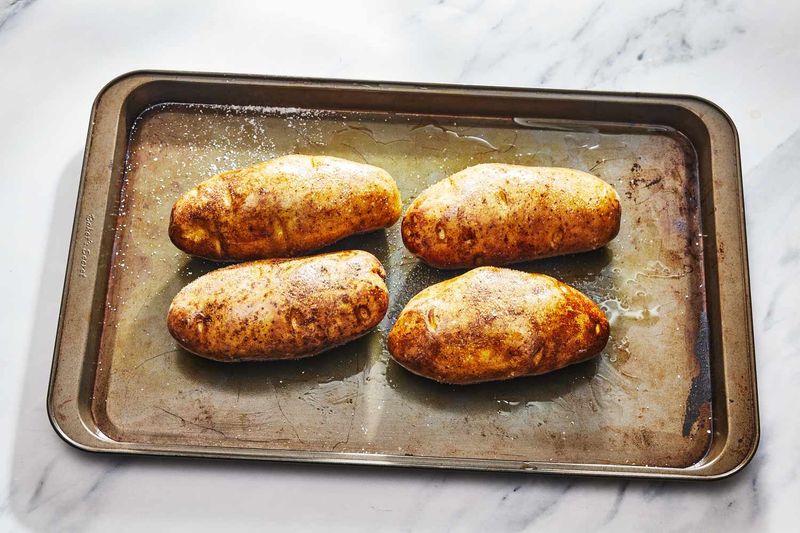
Preserve the quality of leftover baked potatoes by reheating them in the oven at 350°F for 10–15 minutes rather than using a microwave. This method maintains the skin’s crisp texture and prevents the interior from becoming gummy. A microwave can make the potato rubbery, compromising the original deliciousness. Instead, an oven gently revives the potato without sacrificing flavor or texture. This reheating method ensures a satisfying meal, whether you’re enjoying leftovers or preparing them ahead for convenience.
20. Stuff It and Bake Again

Transform your baked potato into a decadent treat by making it twice-baked. Scoop out the insides, mix them with cheese, bacon, or herbs, then stuff them back into the skin. Bake again until the top is golden and bubbly. This method brings a new dimension of flavor and texture, combining the creaminess of mashed potatoes with the crispiness of the baked skin. It’s an indulgent twist on a classic that turns a simple potato into a meal in itself, perfect for impressing guests or satisfying a hearty appetite.
